Amazing Natural Phenomena: The Planet's Most Incredible Spectacles
Natural phenomena awaken our sense of wonder
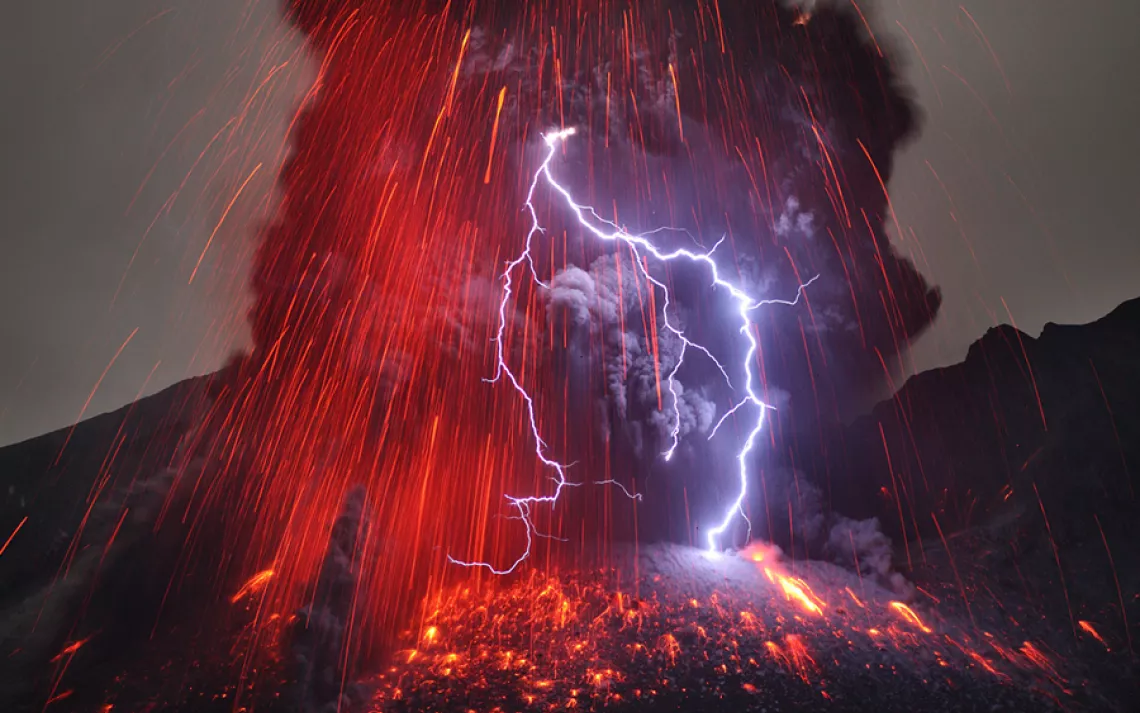
Far more than a postcard-perfect backdrop, nature is an unpredictable force that both enthralls and terrifies. Just when we take nature for granted, eerie northern lights, devastating volcanic lightning, and other phenomena awaken our sense of wonder and remind us of how little we understand about our world. --Melissa Pandika
Volcanic lightning
Lightning strikes Japan's Sakurajima volcano as it spews red-hot lava, creating a terrifyingly beautiful display. No one knows exactly how volcanic lightning occurs, but scientists hypothesize that charge separation is responsible. As fiery magma, ash, and rock clash with cooler air, oppositely charged particles separate from each other. A lightning bolt forms to balance the charge distribution. The biggest volcanic storms may pack as much power as the massive, tornado-spawning supercell thunderstorms.
Photo by Caters News Agency
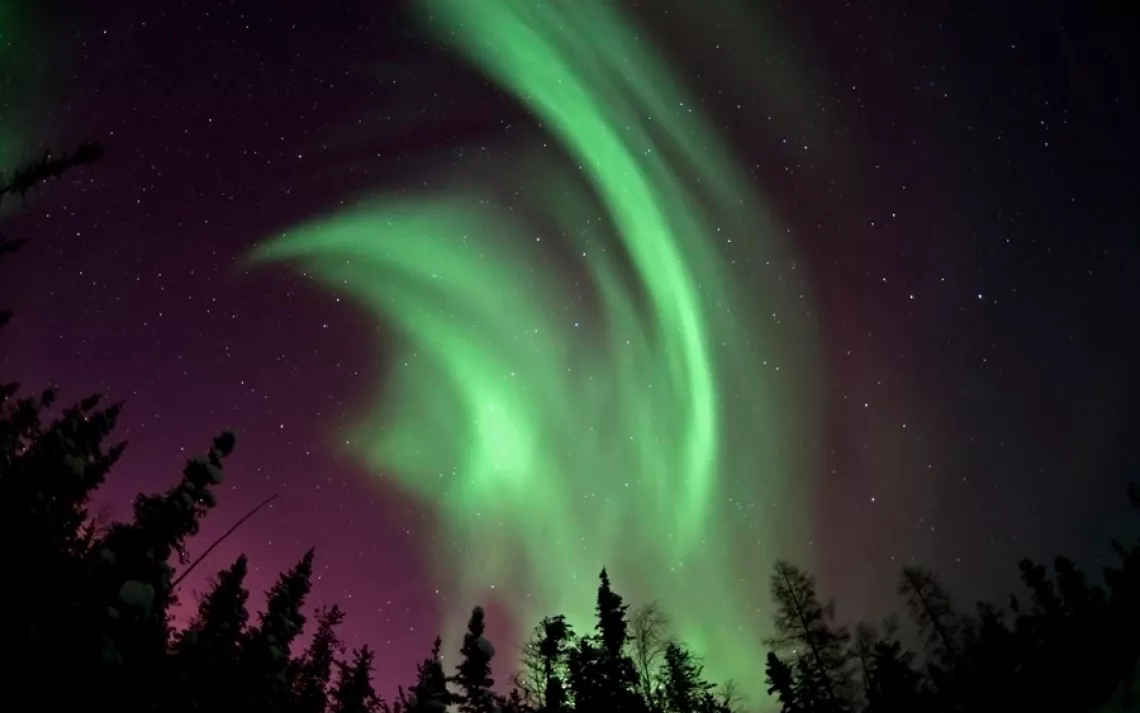
Aurora borealis and aurora australis
Named after the Roman goddess of dawn, the auroras cast an alien glow over the low-latitude Arctic and Antarctic regions. In the Arctic, they're known as the aurora borealis, or the northern lights, while the Antarctic equivalent is called aurora australis, or the southern lights. The haunting display occurs when highly charged electrons from solar winds collide with Earth's atmosphere. Solar winds flow from the sun along lines of magnetic force produced by Earth's core and bounce off oxygen and nitrogen atoms when they reach its upper atmosphere. The colors produced—green, red, blue, or violet—depend on which atoms the winds strike and the altitude where they meet. The magnetic and electrical forces react with each other in shifting combinations, seen as long curtains of color dancing across the sky.
Photo by Caters News Agency
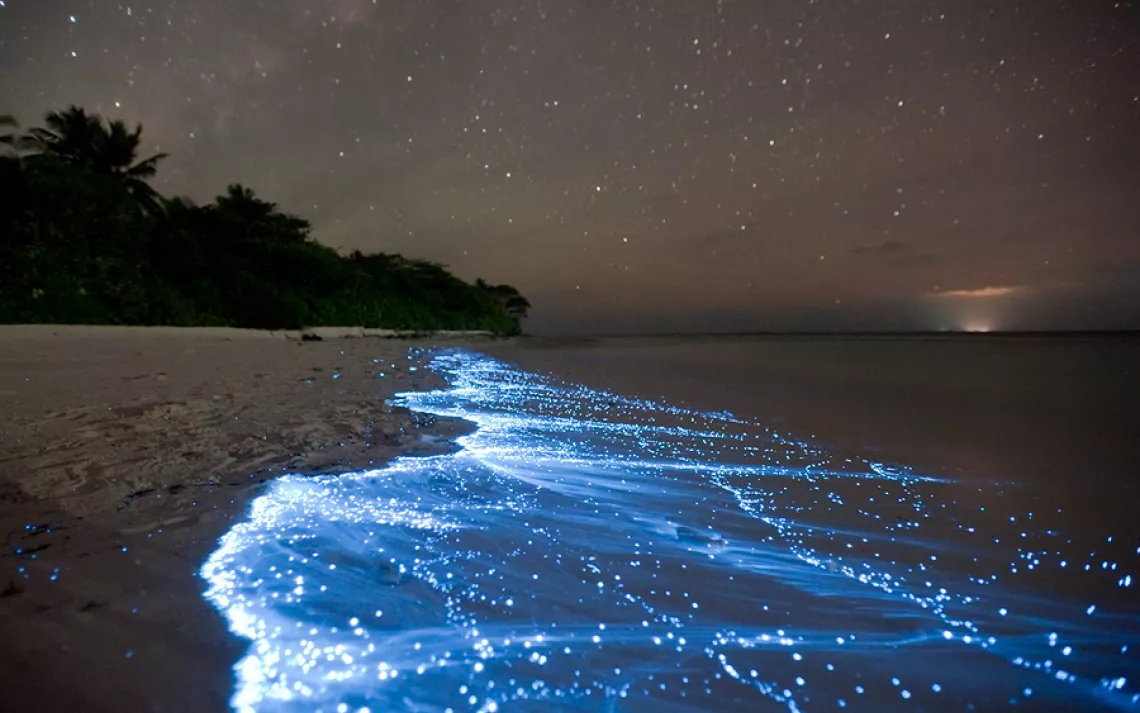
Bioluminescent shores
Constellations of electric blue lights wash along the shores of Vaadhoo Island in the Maldives. Known as bioluminescence, this biological light is produced by marine microorganisms called phytoplankton, which illuminate beaches around the world. The fairy-tale display happens when a pigment called luciferin reacts with oxygen, while an enzyme called luciferase speeds up the process. But what looks like an enchanting spectacle may actually be a harrowing escape attempt. Phytoplankton often use bioluminescence as a defense mechanism. The light distracts predators by disrupting their swimming behavior and may lure animals that feed on them.
Photo by Caters News Agency
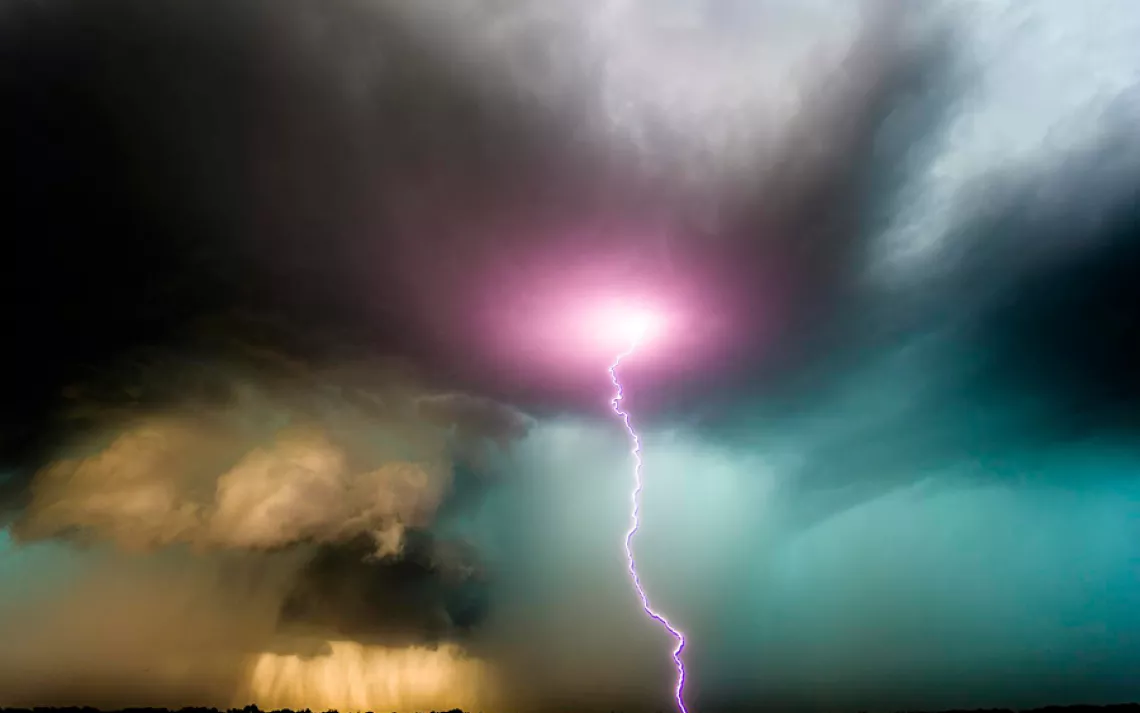
Lightning
Thrilling and mesmerizing, lightning is nature's way of restoring electrostatic balance. The phenomenon begins as static charges in a rain cloud. Convection currents lift the droplets in the clouds underbelly to colder, higher altitudes and push down on the resulting ice and hail. As the ice and water meet, electrons are stripped off, resulting in a cloud with a negatively charged bottom and a positively charged top. A lightning bolt then discharges the electrical field. Sometimes positive charge builds on the ground, attracted to the negative charge on the ground, lighting a terrifying spark.
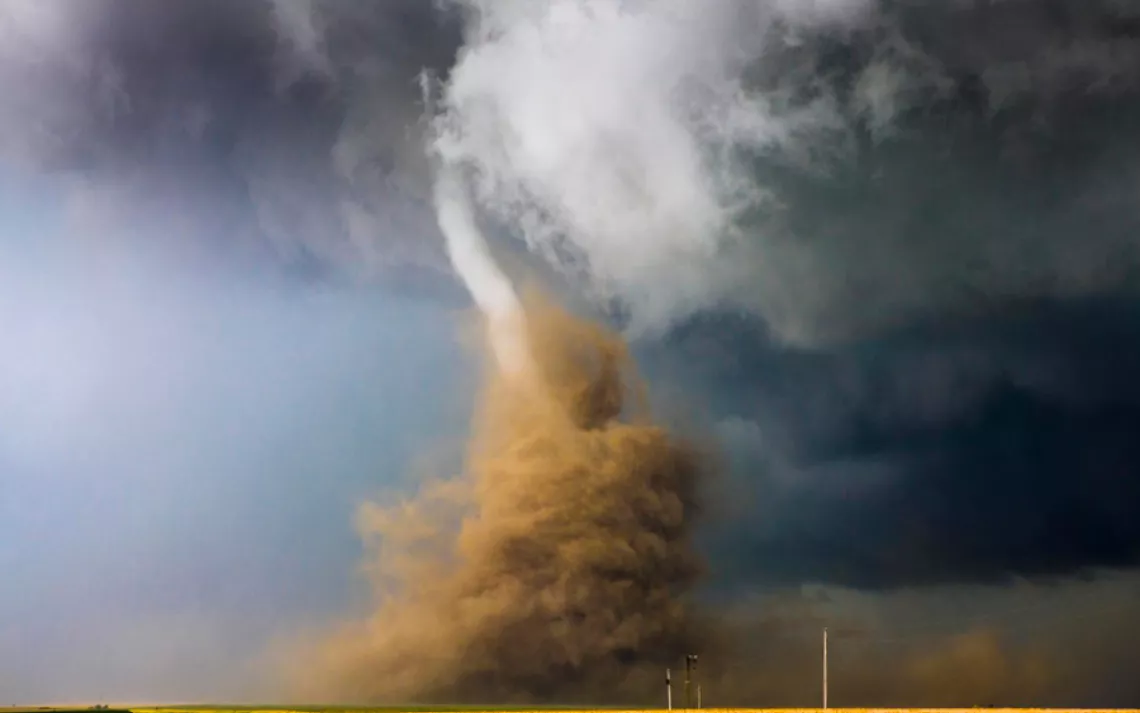
Tornadoes
These swirling columns of air arise from massive thunderstorm clouds called supercells that can grow up to 400,000 feet. Winds at two different altitudes blow at varying speeds, twisting humid air into a horizontal spiral. Rising air in the thunderstorm's updraft tilts the spiral vertically, causing it to touch down and begin its destructive path. Most tornadoes grow up to a few yards wide, bringing rain, hail, lightning, and winds up to 110 miles per hour. The largest tornado on record, which tore through El Reno, Oklahoma, in May, measured a whopping 2.6 miles wide and had gusts reaching 295 miles per hour.
Photo by David Mayhew/TandemStock
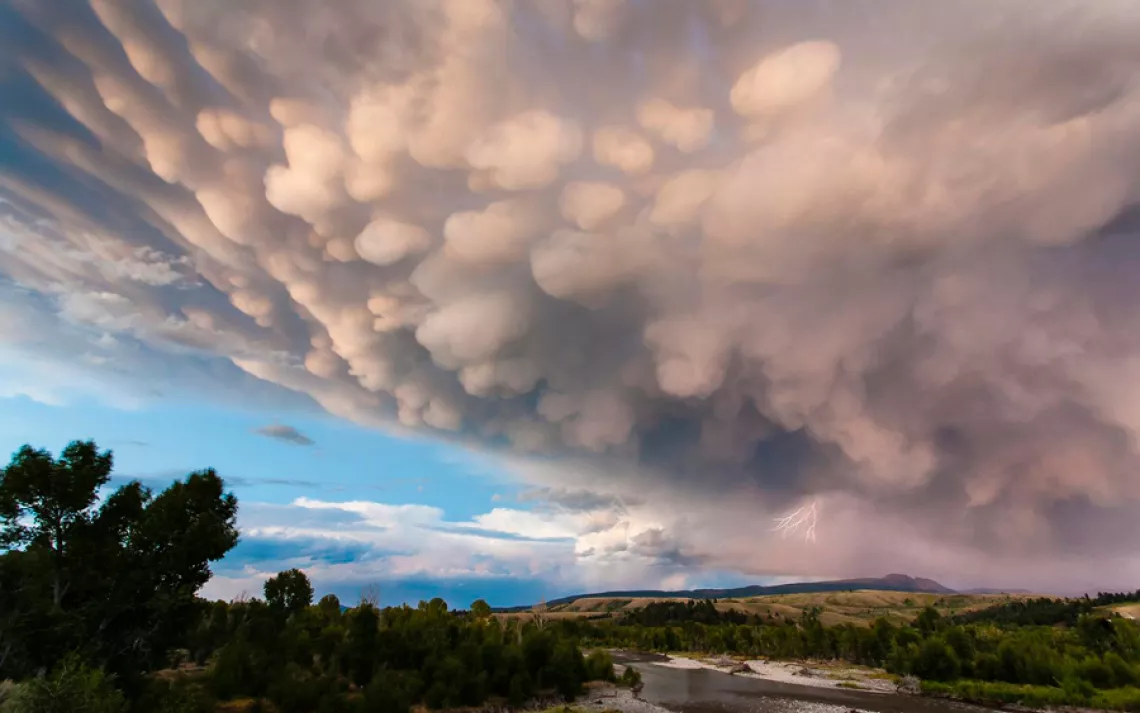
Mammatus clouds
If you spot these odd, bubble-shape formations, known as mammatus clouds, count yourself lucky: They're extremely rare. Most clouds form when air rises, making them puff upward, but mammatus clouds are formed when air sinks, causing them to puff downward. Theyre basically upside-down clouds. The air above and below the cloud creates a certain type of turbulence that forms the cloud particles into perfectly smooth orbs. But don't marvel at them outside for too long—they often mean a thunderstorm is brewing. Here, lighting strikes pink mammatus clouds above Grand Teton Park in Wyoming.
Photo by Mike Cavaroc/TandemStock
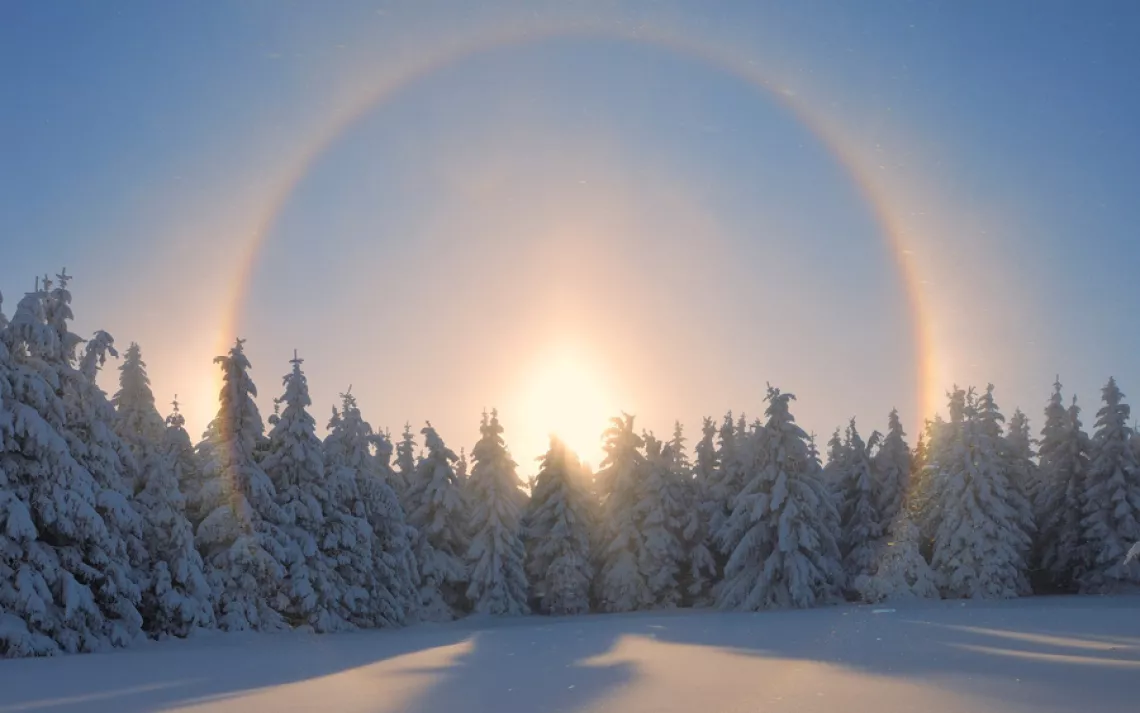
Sun Halos
A rainbow-colored halo encircles the sun as it hangs above snow-covered conifers on Germany's Ore Mountains. Halos, which also form around the moon, are created by millions of ice crystals in thin, high-altitude clouds. Each crystal acts as a tiny prism that bends and reflects light. The crystals have to be oriented just so for the halo to appear. The old saying "ring around the moon means rain soon" holds some truth. Halos form only in cirrus clouds, which often herald low-pressure systems that can bring rain or snow in a few days.
Photo by Radius/SuperStock
 The Magazine of The Sierra Club
The Magazine of The Sierra Club


